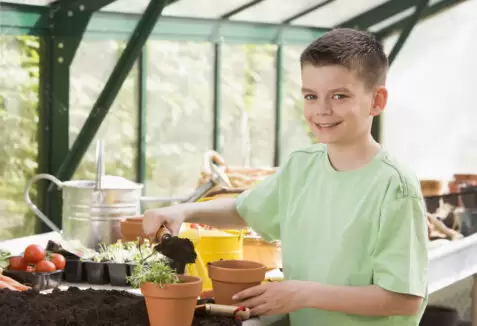Energy efficiency is at the top of many homeowners’ minds, and your garden should be no exception. Your garden presents many opportunities to improve your entire home’s energy efficiency, and investing time in creating a more sustainable environment is great for your energy bills and the environment. Here are some useful tips to enhance your garden’s energy efficiency.
Choose the Right Plants
Respect your local area and select plants that are well-suited to the environment. It’s easy to get excited about exotic plants, but the best ones for your soil are native plants. They are resilient, require less water, and are even less susceptible to pest control than non-native species. When you grow the right plants, you reduce the energy needed to maintain them.
Consider a Vegetable Garden
Many of us get too caught up in the aesthetic of our gardens and don’t think about their practical function. Vegetables, fruits, and herbs can get expensive at the grocery store, and sometimes they’re hard to find. Consult with your local gardening center about the best crops for your area, and learn what’s required for their maintenance.
Educate yourself about growing food crops as they compete with 30,000 species of weeds, 3,000 species of nematodes, and 10,000 species of plant-eating insects. These facts certainly don’t mean they are impossible to grow, but simply that they require some upkeep. Trust us, in a few months, when you only need to go outside to decide what to make for dinner, it will be worth it.
Use Drip Irrigation
Drip irrigation is a much more efficient solution to traditional sprinklers, which waste a lot of water due to evaporation and run-off. A U.S. family of four goes through almost 400 gallons of water daily, and eliminating traditional sprinklers will help you reduce that number. When you use drip irrigation, you directly water the plant’s roots, reducing water loss and the need for frequent watering. Additionally, you can customize your system to deliver specific amounts to each plant, depending on its needs.
Fix Leaks
Leaks happen throughout a home, but a common culprit is a garden hose. They can slowly spill water in your back garden for days or weeks before you realize it, but it will be evident when you see your water bill that month. A whopping 13.7% of water use is the result of leaks, according to Plumbing Manufacturers International, which is expensive and wasteful. Check your hose and outdoor faucets to ensure they are running correctly, fix any leaks, and always turn them off properly when finished.
Use Sustainable Materials
You don’t need to buy the expensive wooden flowerbed you saw at the hardware store or invest in ornate but impractical plant pots. When you’re building garden structures, consider sustainable materials. Materials like reclaimed wood and recycled plastic work great in gardens and will be either low-cost or free.
Compost
Stop scraping uneaten food into the trash and start composting. Your plants need nutrient-rich soil, and when you compost, the organic materials mix into the ground, giving your plants the nourishment they need. Doing this won’t just improve soil health but also reduce the need for fertilizers.
Use Solar Lights
Your garden needs some light, but powering it with electricity gets expensive, especially if you forget to turn them off at night. Solar lights use the sun’s energy to fuel their batteries and won’t drive up your electricity bill. They’re also a much more durable solution to traditional lighting.
There are many opportunities to make your garden more energy efficient, from growing native plants to adding food crops, drip irrigation, fixing leaks, using sustainable materials, composting, and installing solar lights. With these simple tips, you’ll benefit the world around you while reducing your energy bills.

